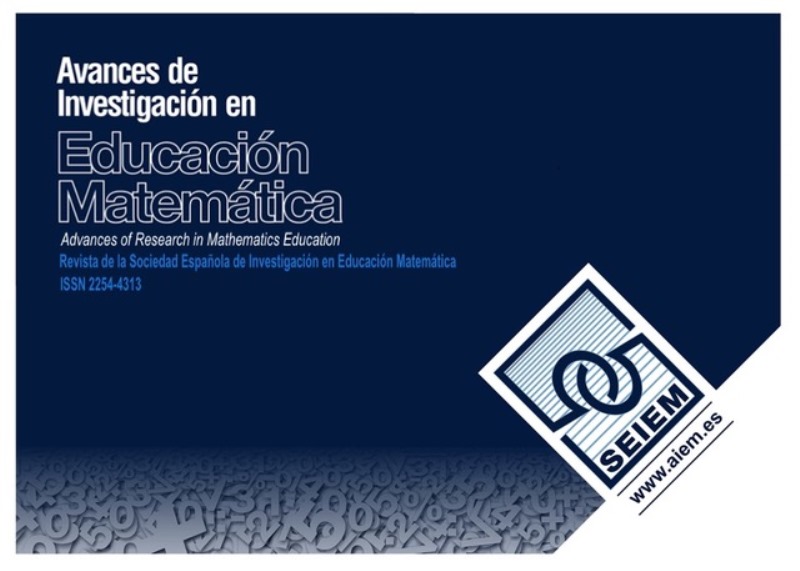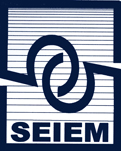Problem Posing in Pre-service Secondary Mathematics Teacher Education: Insights of using GeoGebra
DOI:
https://doi.org/10.35763/aiem28.7550Keywords:
Problem-posing, Problem-solving, Teacher Education, GeoGebraAbstract
This research analyzes how the use of GeoGebra strengthens future teachers’ ability to reformulate problems. A qualitative analysis is applied, based on four phases of the problem formulation process (orientation, connection, generation and reflection), along with the categories established by Baumanns: reformulating to solve the problem and to inquire or investigate; formulating to generate new problems or to design them for didactic purposes. The results show that GeoGebra enabled participants to evaluate prior ideas and assess the feasibility of the problems they proposed. Additionally, visualization and dynamic approaches influenced both the reformulation and the formulation of new problems.
Downloads
References
Ayllón, M. F., Castro, E., & Molina, M. (2011). Invención de problemas y tipificación de problema “difícil” por alumnos de educación primaria. En M. Marín Rodríguez, G. Fernández García, L. J. Blanco Nieto, & M. Palarea Medina (Eds.), Investigación en Educación Matemática XV (pp. 277-286). SEIEM. https://www.seiem.es/acta/xv-2011-ciudad-real/
Ayllón, M. F., Gallego, J. L., & Gómez-Pérez, I. A. (2016). La actuación de estudiantes de educación primaria en un proceso de invención de problemas. Perfiles Educativos, 38(152), 51-67. https://doi.org/10.22201/iisue.24486167e.2016.152.57588
Baumanns, L. (2022). Mathematical problem posing. Springer Spektrum Wiesbaden. https://doi.org/10.1007/978-3-658-39917-7
Cai, J., Hwang, S., Jiang, C., & Silber, S. (2015). Problem-posing research in mathematics education: Some answered and unanswered questions. En F. M. Singer, N. F. Ellerton, & J. Cai (Eds.), Mathematical problem posing. Research in mathematics education (pp. 3-34). Springer.
https://doi.org/10.1007/978-1-4614-6258-3_1
Cai, J., & Rott, B. (2024). On understanding mathematical problem-posing processes. ZDM Mathematics Education, 56, 61-71.
https://doi.org/10.1007/s11858-023-01536-w
Camacho-Machín, M., Perdomo-Díaz, J., & Hernández, A. (2019). Actividades para la formación de profesores derivadas del uso de GeoGebra en la resolución de problemas. En E. Badillo, N. Climent, C. Fernández, & M. T. González (Eds.), Investigación sobre el profesor de matemáticas: práctica de aula, conocimiento, competencia y desarrollo profesional (pp. 371-394). Ediciones Universidad de Salamanca.
Chico, J., Montes, M., & Badillo, E. (2022). Transformaciones de la información en la formulación de problemas: Una mirada hacia los futuros maestros. En T. F. Blanco, C. Núñez-García, M. C. Cañadas, & J. A. González-Calero (Eds.), Investigación en Educación Matemática XXV (pp. 219-227). SEIEM. http://www.seiem.es/docs/actas/25/ActasXXVSEIEM.pdf
Cruz, M. (2006). A mathematical problem–formulating strategy. International Journal for Mathematics Teaching and Learning, 79-90.
García-Alonso, I., Bruno, A., Almeida, R., Sosa-Martín, D., & Perdomo-Díaz, J. (2022). Problemas de fracciones formulados por futuros profesores: Algunas características. En T. F. Blanco, C. Núñez-García, M. C. Cañadas, & J. A. González-Calero (Eds.), Investigación en Educación Matemática XXV (pp. 295-304). SEIEM.
https://www.seiem.es/2022/05/05/actas-xxv-seiem-santiago-de-compostela-2022/
Gómez-Chacón, I. M., & de la Fuente, C. (2018). Problem-solving and mathematical research projects: Creative processes, actions, and mediations. En N. Amado, S. Carreira, & K. Jones (Eds.), Broadening the scope of research on mathematical problem solving (pp. 347-373). Springer.
https://doi.org/10.1007/978-3-319-99861-9_15
Hernández, A., Perdomo-Díaz, J., & Camacho-Machín, M. (2023). Formulación de problemas matemáticos con GeoGebra. Un estudio inicial. Formación del Profesorado e Investigación en Educación Matemática, 15, 117-136. https://wp.ull.es/fpiem/numero-xv/
Jacinto, H., & Carreira, S. (2017). Mathematical problem solving with technology: The techno-mathematical fluency of a student-with-GeoGebra. International Journal of Science and Mathematics Education, 15, 1115-1136. https://doi.org/10.1007/s10763-016-9728-8
Jacinto, H., & Carreira, S. (2023). Knowledge for teaching mathematical problem-solving with technology: An exploratory study of a mathematics teacher’s proficiency. European Journal of Science and Mathematics Education, 11(1), 105-122. https://doi.org/10.30935/scimath/12464
Martín-Ferraz, A., Hernández, A., & Camacho-Machín, M. (2024). Reformulación de problemas matemáticos por futuros profesores de secundaria. Formación del Profesorado e Investigación en Educación Matemática, 16, 133-162. https://wp.ull.es/fpiem/2024/11/24/16_07-reformulacion-de-problemas-matematicos-por-futuros-profesores-de-secundaria/
Mason, J., Burton, L., & Stacey, K. (1982). Thinking mathematically. Addison-Wesley Publishing Company.
Montes, M., Chico, J., Martín-Díaz, J. P., & Badillo, E. (2024). Mathematics teachers’ specialized knowledge mobilized through problem transformation. Journal of Mathematical Behavior, 73, 101132. https://doi.org/10.1016/j.jmathb.2024.101132
Pólya, G. (1945). How to solve it? Princeton University Press.
Reyes-Rodríguez, A., Santos-Trigo, M., & Barrera-Mora, F. (2017). The construction of a square through multiple approaches to foster learners’ mathematical thinking. Teaching Mathematics and its Applications: An International Journal of the IMA, 36(3), 167-181. https://doi.org/10.1093/teamat/hrw022
Santos-Trigo, L. M. (2014). La resolución de problemas matemáticos. Fundamentos cognitivos. Trillas.
Santos-Trigo, M. (2024). Problem solving in mathematics education: Tracing its foundations and current research-practice trends. ZDM Mathematics Education, 56, 211-222. https://doi.org/10.1007/s11858-024-01578-8
Santos-Trigo, M., & Camacho-Machín, M. (2013). Framing the use of computational technology in problem solving approaches. The Mathematical Enthusiast, 10(1-2), 279-302. https://doi.org/10.54870/1551-3440.1268
Santos-Trigo, M., Camacho-Machín, M., & Barrera-Mora, F. (2024). Focusing on foundational calculus ideas to understand the derivative concept via problem-solving tasks that involve the use of a dynamic geometry system. ZDM Mathematics Education, 56, 1287-1301.
https://doi.org/10.1007/s11858-024-01607-6
Santos-Trigo, M., Reyes-Martínez, I., & Gómez-Arciga, A. (2022). A conceptual framework to structure remote learning scenarios: A digital wall as a reflective tool for students to develop mathematics problem-solving competencies. International Journal of Learning Technology, 17(1), 27-52. https://doi.org/10.1504/IJLT.2022.123686
Schoenfeld, A. (1985). Mathematical problem solving. Academic Press.
Downloads
Published
How to Cite
Issue
Section
License
Copyright (c) 2025 Alexánder Hernández Hernández, Aitana Martín Ferraz, Matías Camacho Machín

This work is licensed under a Creative Commons Attribution 4.0 International License.
The articles published in this journal are under a license Creative Commons: By 4.0 España from number 21 (2022).
Authors who publish with this journal agree to the following terms:
- Authors retain copyright and keep the acknowledgement of authorship.
- The texts published in this journal are – unless indicated otherwise – covered by the Creative Commons Attribution 4.0 international licence. You may copy, distribute, transmit and adapt the work, provided you attribute it (authorship, journal name, publisher) in the manner specified by the author(s) or licensor(s). The full text of the licence can be consulted here: http://creativecommons.org/licenses/by-nc/4.0.
- Authors are able to enter into separate, additional contractual arrangements for the non-exclusive distribution of the journal's published version of the work (e.g., post it to an institutional repository or publish it in a book), with an acknowledgement of its initial publication in this journal.
- Authors are permitted and encouraged to post their work online (e.g., in institutional repositories or on their website) prior to and during the submission process, as it can lead to productive exchanges, as well as earlier and greater citation of published work (See The Effect of Open Access).
Funding data
-
Agencia Estatal de Investigación
Grant numbers PID2022-139007NB-I00









